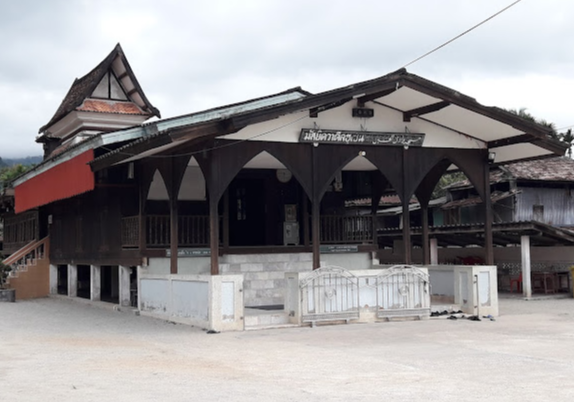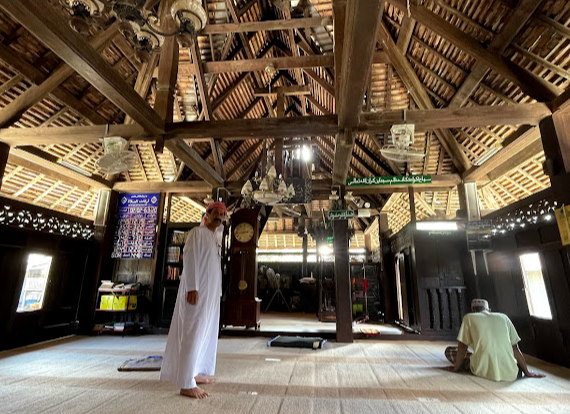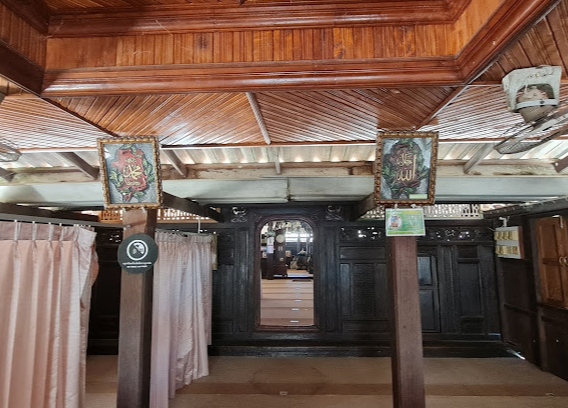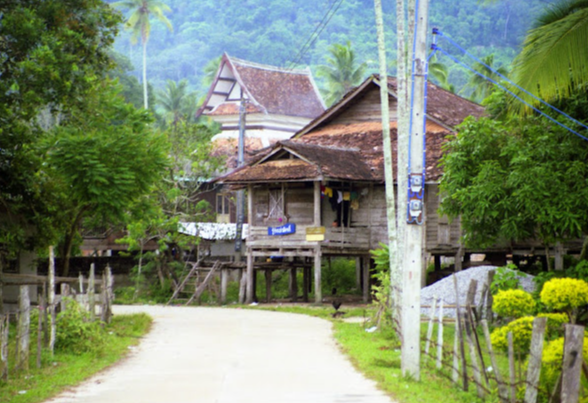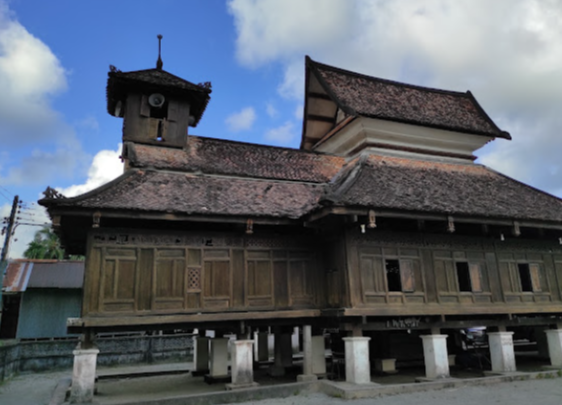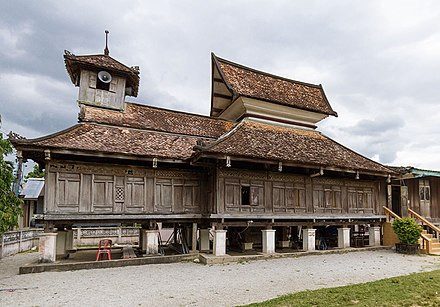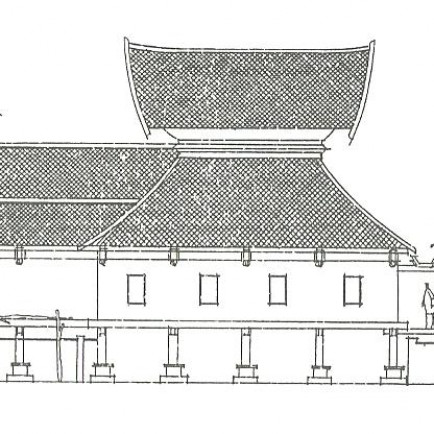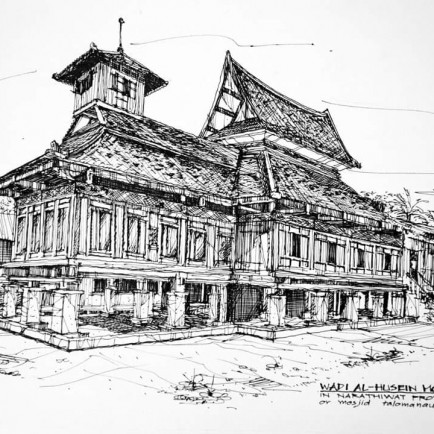300 Years Mosque
History
The mosque dates back to the Pattani Kingdom, when it was ruled by a sultan. The villagers in that area who were both Muslims and Buddhists built the mosque in 1634. They cooperated in the construction of the mosque. Legend states that during the war between the Siamese Kingdom and the Pattani Kingdom, a young woman of a village in the Pattani Kingdom was fleeing from the war. She was the keeper of the village's Quran and fled with it in her hands. Upon fleeing, she fell into a small valley. Rescued by the villagers in that area, she surprised them as she had the Quran tight in her hands. The villagers so then decided to build the Mosque after the war ended. Another legend states that the mosque was built by Wan Husein Az-Sanawi, a teacher who migrated to the Pattani Kingdom, in 1624. The hand-written Quran and the construction plan of the mosque are kept in the mosque itself.
Urban and Architectural
The mosque combines several architectural styles from the Chinese, Thais, and the Malays. The mosque was built with wood from the hummingbird tree and an ironwood tree. Because nails were not invented at that time, wedges were used instead to hold the wood into place. Original roofing was made of palm tree leaves and it was later changed to terracotta tiles. The mosque consists of two buildings. The smaller building is where the mihrab is located and has three layers of roof. It is also where the Chinese-style minaret is located. The bigger building has more of Thai architectural influence with the Thai-style gable. The walls of both buildings has etchings of Thai/Chinese/Malay designs and patterns.
To prepare for the ASEAN community, the 300 year mosque received a 200-million Thai Baht fund from the government to renovate the mosque in early 2014. The plan will be implemented by the Southern Border Provinces Administrative Center. Renovations includes renovating the mosque, improving surrounding landscapes, and adding functions to the mosque (community center).
Description
300 Years Mosque is a religious place in Islam located in Mu 1, Ban Talo Manok. Lubo Sawa Subdistrict, Ba Cho District , Narathiwat Province, at the foot of Mount Budo. This mosque was built with the most beautiful and ancient traditional woodwork of the Malay world ( Nusantara ) . Preserving the handwritten Holy Quran , by Hussain Asanawi the first Imam of the mosque. It is also a mosque with a blend of Malay, Thai and Chinese architecture
Details
Location
FMM4+MCX, Lubosawo, Bacho District, Narathiwat 96170, Thailand
Worshippers
100
Owners
Haji Haisu
Year of Build
1634
Area
220
Drawings
Map
History
The mosque dates back to the Pattani Kingdom, when it was ruled by a sultan. The villagers in that area who were both Muslims and Buddhists built the mosque in 1634. They cooperated in the construction of the mosque. Legend states that during the war between the Siamese Kingdom and the Pattani Kingdom, a young woman of a village in the Pattani Kingdom was fleeing from the war. She was the keeper of the village's Quran and fled with it in her hands. Upon fleeing, she fell into a small valley. Rescued by the villagers in that area, she surprised them as she had the Quran tight in her hands. The villagers so then decided to build the Mosque after the war ended. Another legend states that the mosque was built by Wan Husein Az-Sanawi, a teacher who migrated to the Pattani Kingdom, in 1624. The hand-written Quran and the construction plan of the mosque are kept in the mosque itself.
Urban and Architectural
The mosque combines several architectural styles from the Chinese, Thais, and the Malays. The mosque was built with wood from the hummingbird tree and an ironwood tree. Because nails were not invented at that time, wedges were used instead to hold the wood into place. Original roofing was made of palm tree leaves and it was later changed to terracotta tiles. The mosque consists of two buildings. The smaller building is where the mihrab is located and has three layers of roof. It is also where the Chinese-style minaret is located. The bigger building has more of Thai architectural influence with the Thai-style gable. The walls of both buildings has etchings of Thai/Chinese/Malay designs and patterns.
To prepare for the ASEAN community, the 300 year mosque received a 200-million Thai Baht fund from the government to renovate the mosque in early 2014. The plan will be implemented by the Southern Border Provinces Administrative Center. Renovations includes renovating the mosque, improving surrounding landscapes, and adding functions to the mosque (community center).
Description
300 Years Mosque is a religious place in Islam located in Mu 1, Ban Talo Manok. Lubo Sawa Subdistrict, Ba Cho District , Narathiwat Province, at the foot of Mount Budo. This mosque was built with the most beautiful and ancient traditional woodwork of the Malay world ( Nusantara ) . Preserving the handwritten Holy Quran , by Hussain Asanawi the first Imam of the mosque. It is also a mosque with a blend of Malay, Thai and Chinese architecture


